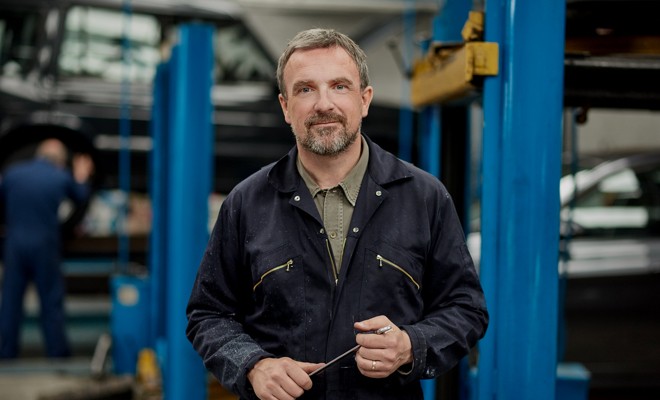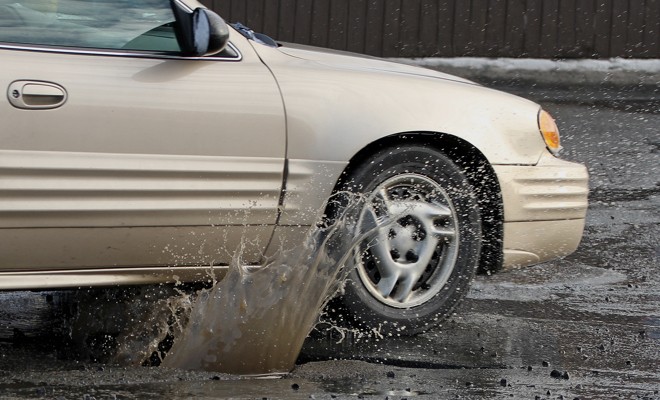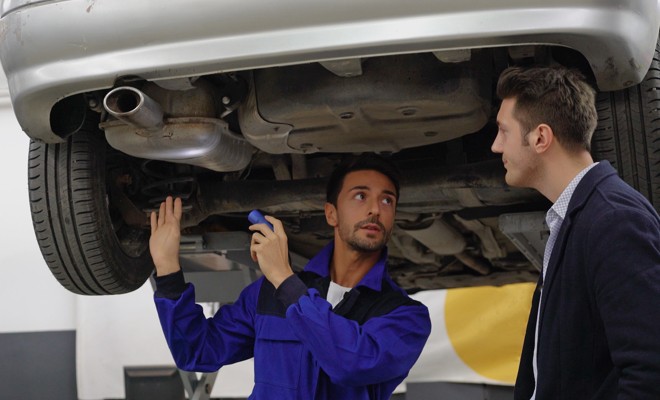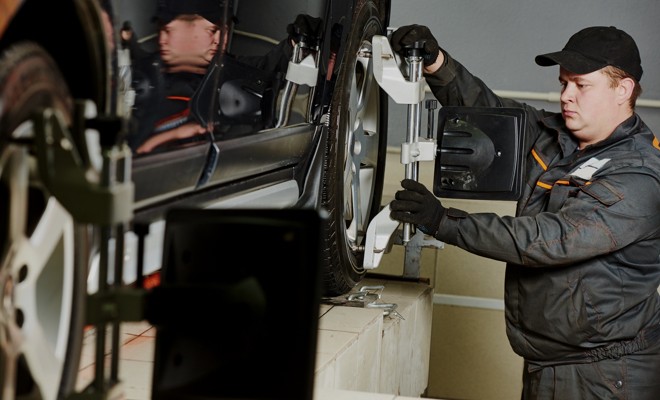Straightening things out

Uneven tire wear… check. Car pulling to one side… check. Steering wheel is crooked when you are driving straight… check. Its official, your car needs an alignment. This isn’t something to put off – your car’s performance won’t improve on its own.
Continuing to drive will only make the condition of your tires and the steering and handling of your vehicle progressively worse. Call your mechanic today to schedule an alignment and read on to learn what goes into an alignment. To learn more about the symptoms of bad alignment, check out this article.
What can cause my vehicle to come out of alignment?

A common cause for your vehicle coming out of alignment is the dreaded pothole. If you hit a particularly large pothole, there is a possibility for damage to occur to your car. Alignment problems can also arise if you hit a curb or other obstruction in the road.
What is an alignment?

An alignment is a procedure performed by your mechanic to get your vehicle’s suspension back into proper form. By making adjustments to the vehicle’s tires and axles, the wheels are once again aligned with each other and can make solid contact with the road.
What tools are used?

Your mechanic will likely raise your car up on a hoist and use an alignment machine that has devices that clamp to the wheels. The machine is hooked up to a computer and your mechanic makes precise adjustments to a series of measurements to get everything perfectly aligned.
Are there different types of alignments?
There are three main types of alignments available – front-end, thrust and four-wheel. The type of suspension that your vehicle has determines what kind of alignment your car will receive. Your mechanic will be able to recommend the right alignment type for your vehicle.
Front-end alignment
A front-end alignment makes adjustments to the front axle. This is the most basic type of alignment and is not always recommended for modern vehicles.
Thrust alignment
A thrust alignment combines a front-end alignment with a thrust alignment to ensure all four wheels are squared with one another. This type of alignment is usually recommended for vehicles with a solid rear axle.
Four-wheel alignment
This comprehensive alignment combines elements of the front-end and thrust-angle alignments and also positions the rear axle angles. A four-wheel alignment is typically for four-wheel and all-wheel drive vehicles and front-wheel drive cars with adjustable/independent rear suspensions.
What will my mechanic do?
- First, your mechanic will take your vehicle for a test drive to see exactly what is going on with your vehicle.
- Then they’ll raise your car on a hoist and examine the tires and suspension components to ensure that everything is in working order. Any parts that are broken or show signs of excessive wear will be replaced before the alignment process begins.
- Next, the tire pressure is checked on all four tires and any needed adjustments are made.
- Your vehicle will be hooked up to the alignment machine and your mechanic will begin making the adjustments to the suspension angles according to the manufacturer’s specifications. There are four main areas that your mechanic will be adjusting: toe, camber, caster and thrust.
Toe
The angle at which the tires turn in or out when viewed from above. Proper toe is crucial for even tire wear and extended life of your tires.
Camber
The vertical angle – inward or outward – of the tires when looking at the vehicle straight on. Many vehicles have a slight negative camber to aid in stability.
Caster
The forward or backward angle of the steering axis as viewed from the side of the car. Caster helps your vehicle stay on a straight course and aids in your steering wheel returning to a straight position after a turn.
Thrust
This measurement compares the rear axle direction and the centerline of the car. It also looks at the wheelbase and makes sure that the front and rear axles are parallel.
5. Next, your mechanic will ensure that the steering wheel is centered.
6. A test drive is performed to ensure that all issues have been addressed and everything is back in alignment.
Learn more about premium steering and suspension parts, find your car part, or find where to buy your auto part today.
The content contained in this article is for informational purposes only and should not be used in lieu of seeking professional advice from a certified technician or mechanic. We encourage you to consult with a certified technician or mechanic if you have specific questions or concerns relating to any of the topics covered herein. Under no circumstances will we be liable for any loss or damage caused by your reliance on any content.
Other Parts For Your Vehicle
MOOG® offers a wide variety of auto parts for all your vehicle needs.
Check them out today!